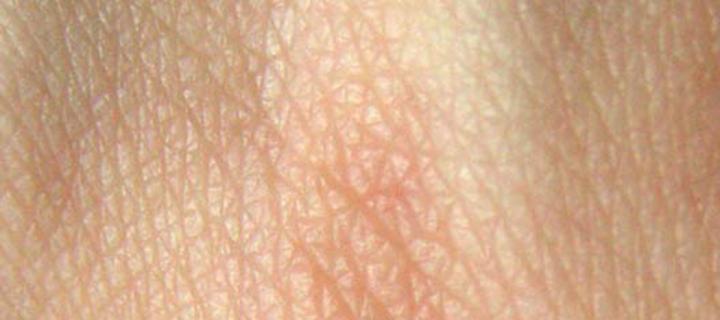Researchers find skin’s own defences point towards new eczema therapies
The body’s own natural defences could be harnessed in a potential therapy for a common skin condition, research suggests.

A new discovery may help create new treatments for atopic eczema, which affects around one in five children and one in 20 adults in the UK.
Also called atopic dermatitis or AD, the condition causes distressing itchy lesions that can lead to broken skin with increased susceptibility to infection. It can have a severe impact on people’s lives, work and sleep.
This new research follows recent studies that show having an intact natural skin barrier is important in preventing eczema.
Now, researchers at the University of Edinburgh have found a way to use the body’s own defence system to repair tiny breaks in the skin’s natural barrier, which make people more vulnerable to eczema.
The skin’s barrier can be impaired by genetic flaws, environmental factors or bacterial infections. People with eczema are much more likely to carry bacteria known as Staphylococcus aureus on their skins. In people with eczema, this bacteria can infect skin lesions and cause damage to the skin barrier.
Researchers based at the University of Edinburgh’s MRC Centre for Inflammation Research, in collaboration with colleagues in the School Chemistry and the Roslin Institute, have discovered that skin cells can be instructed to produce a naturally occurring protective compound.
This substance – called human beta-defensin 2 (hBD2) – is known to kill bacteria, but the study found it is also vital in preventing damage to the skin barrier caused by Staphylococcus aureus. Individuals with eczema typically do not turn on production of hBD2 in their damaged skin lesions.
The researchers found that when hBD2 was applied to skin cells grown in the lab, it helped the skin to remain intact, with the cells strengthening protection against the bacterial damage like reinforcing mortar between the bricks in a wall.
Their findings could lead to new therapies to prevent or treat eczema. Conventional treatment with steroid creams can have side-effects, and become less effective over time.
This is a great chance to work with something that the body makes naturally to develop new therapies for atopic eczema, which affects so many people’s lives.”
Eczema is a disease of our times and is incredibly common. It is very exciting to think there could be a way of recruiting the body’s natural defence systems to help us tackle a condition that has such a huge impact on people.”
The study is published in the Journal of Investigative Dermatology. The work was funded by the Medical Research Council and China Scholarship Council.
Read the original article (pdf)
For further information, please contact:
Ronald Kerr, Press and PR Office; Tel +44 131 650 9547; Email Ronald.Kerr@ed.ac.uk


